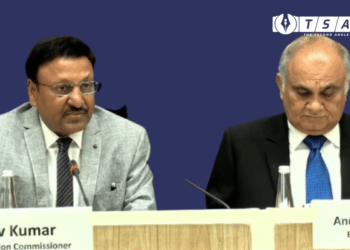An allegation of nurturing a surveillance state in India and its threat to democracy was raised last year after the allegations were made on the Prime Ministers for buying Israeli Spyware and snooping on the oppositions and journalists, activists, lawyers, basically a list of people critiquing the government.
The winter session is going through a reawakening on this issue with the allegations getting further confirmation in a report by an international publication. The New York Times, in its report that came out on January 28 alleged Narendra Modi’s government had acquired as a part of a defence deal that took place in 2017. The Congress has called for a “privilege motion” in the Parliament. They accused technology minister Ashwini Vaishnaw of “deliberately misleading the House.

Meanwhile, the Editors Guild Of India has asked the Supreme Court to take cognizance of the report published in the New York Times. They have urged to the Supreme Court appointed panel which is already hearing the allegations of the government using Pegasus Spyware for snooping on more than 100 people which consists of opposition leaders and journalists.
New York Times reported that India had bought the spyware as part of “a package of sophisticated weapons and intelligence gear worth roughly $2 billion – with Pegasus and a missile system as the center-pieces”.

When was the issue raised?
Last year July, Indian digital news platform The Wire in an exclusive investigative story revealed that around 160 Indians, including prominent activists, lawyers and politicians were spied by the Pegasus malware and this malware was purchased and used by the Indian government. The malware that infects both Android and Apple devices, allows the operators to extract messages, photos, emails, record calls. It also activates microphones to be able to record the communication outside the phone.
The malware has been used by the governments around the phone to keep a tab and collect information of the critiques or opposition of the government. This came out in an investigation by a global consortium the targeted phone numbers were on a database believed to be of interest to clients of Israeli firm NSO.

The NSO has denied all these charges and has asserted that the software was made to target criminals and terrorists. According to NSO, the malware is only sold to military, law enforcement and intelligence agencies from countries. NSO which is also accused of cyber-attacks against Indian journalists in 2019 has denied all the allegations.
A Paris-based media nonprofit Forbidden Stories and Amnesty International got access to a leaked list of more than 50,000 phone numbers “concentrated in countries known to engage in surveillance of their citizens. This became the basis of a global investigation called the Pegasus Project. 17 organizations collaborated with this global investigation.
The Narendra Modi government has been changing laws in the country and bringing draconian laws like the Unlawful Activities (Prevention) Act, in the name of National Security. It has escaped the questions regarding the malware using the same shield.

But it has still not answered a few questions. What was the threat that forced India to acquire malware to snoop on journalists? How can the government justify hacking 100s of phones and why were these people targeted? If challenged legally does the government has any justification for spying on citizens?
Last year, a bench of retired Justice Raveendran and the three-member technical committee was appointed by the Supreme Court to investigate the matter.
Also Checkout: A breakdown of the ongoing protests in Bihar












